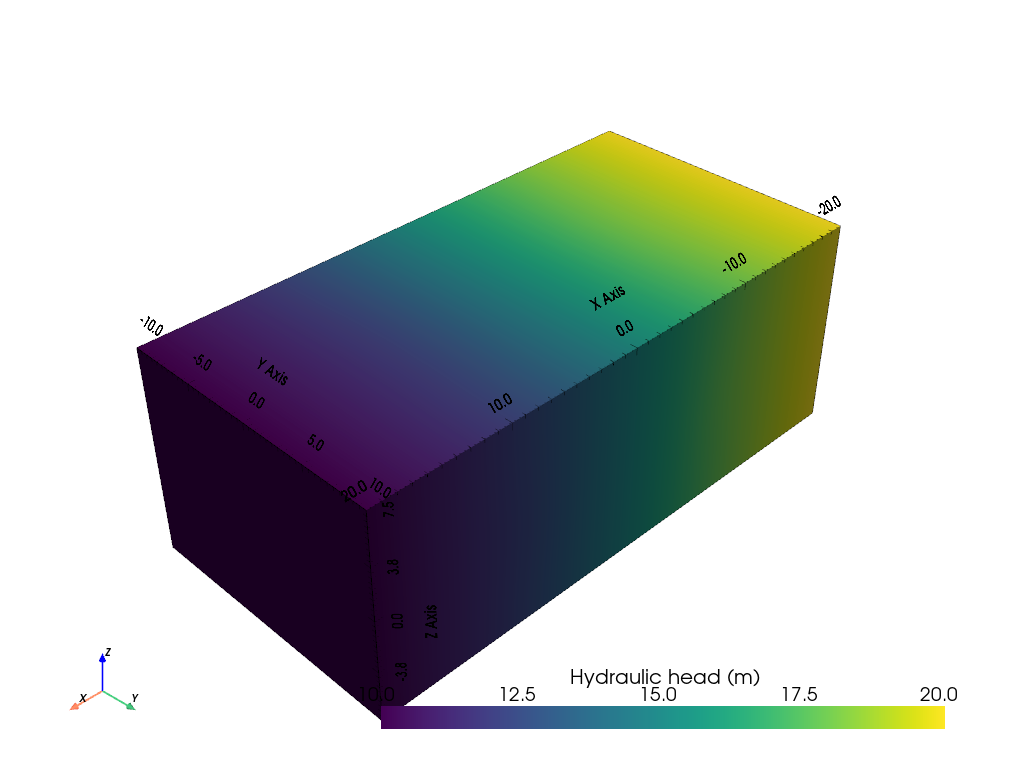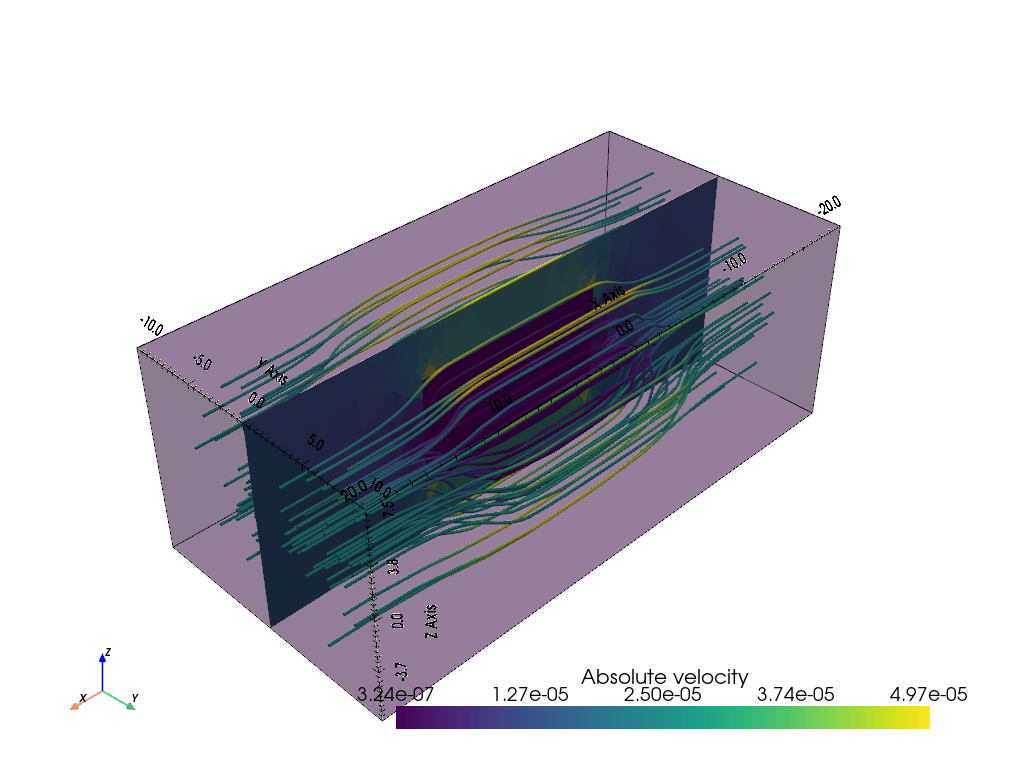Note
Go to the end to download the full example code.
3D Darcy flow#
Here we illustrate Darcy flow in a heterogeneous 3D body. We use the general
pygimli.solver.solveFiniteElements() to solve Darcy’s law:
The sought hydraulic velocity distribution can then be calculated as the gradient field of \(\mathbf{v}=-\nabla p\).
import numpy as np
import pygimli as pg
import pygimli.meshtools as mt
from pygimli.viewer.pv import drawStreamLines, drawSlice
We start with creating the geometry: a small cube inside of a bigger one, and create a mesh from it.
plc = mt.createCube(size=[40, 20, 15], marker=1, boundaryMarker=0)
cube = mt.createCube(size=[15, 15, 8], marker=2, boundaryMarker=0)
geom = plc + cube
mesh = mt.createMesh(geom, area=4)
For the boundary conditions, we set the markers of all left boundaries to 1 and the markers of all righth boundaries to 2.
for bound in mesh.boundaries():
x = bound.center().x()
if x == mesh.xmin():
bound.setMarker(1)
elif x == mesh.xmax():
bound.setMarker(2)
Next, we create a map for the hydraulic conductivity. The outer cube has 1e-4m/s and the inner 1e-6m/s.
kMap =[[1, 1e-4], [2, 1e-6]]
kArray = pg.solver.parseMapToCellArray(kMap, mesh)
We set two different heads for the left and right bounday and solve the Darcy equation using Finite Elements
bc = {"Dirichlet": {1: 20.0, 2: 10.0}}
h = pg.solver.solveFiniteElements(mesh, kMap, bc=bc)
From the hydraulic head we compute the velocity by multiplying it with the hydraulic conductivity that is before transformed into an isotropic tensor.
kTensor = np.column_stack([kArray] * 3)
vel = -pg.solver.grad(mesh, h) * kTensor
pg.show(mesh, h, label="Hydraulic head (m)")

(<pyvista.plotting.plotter.Plotter object at 0x7f2842c2bf10>, None)
Last, we show the flow lines that avoid the poor conductor.
ax, _ = pg.show(mesh, alpha=0.3, hold=True, colorBar=False)
drawStreamLines(ax, mesh, vel, radius=.1, source_radius=10)
drawSlice(ax, mesh, normal=[0,1,0], data=pg.abs(vel), label="Absolute velocity")
ax.show()
